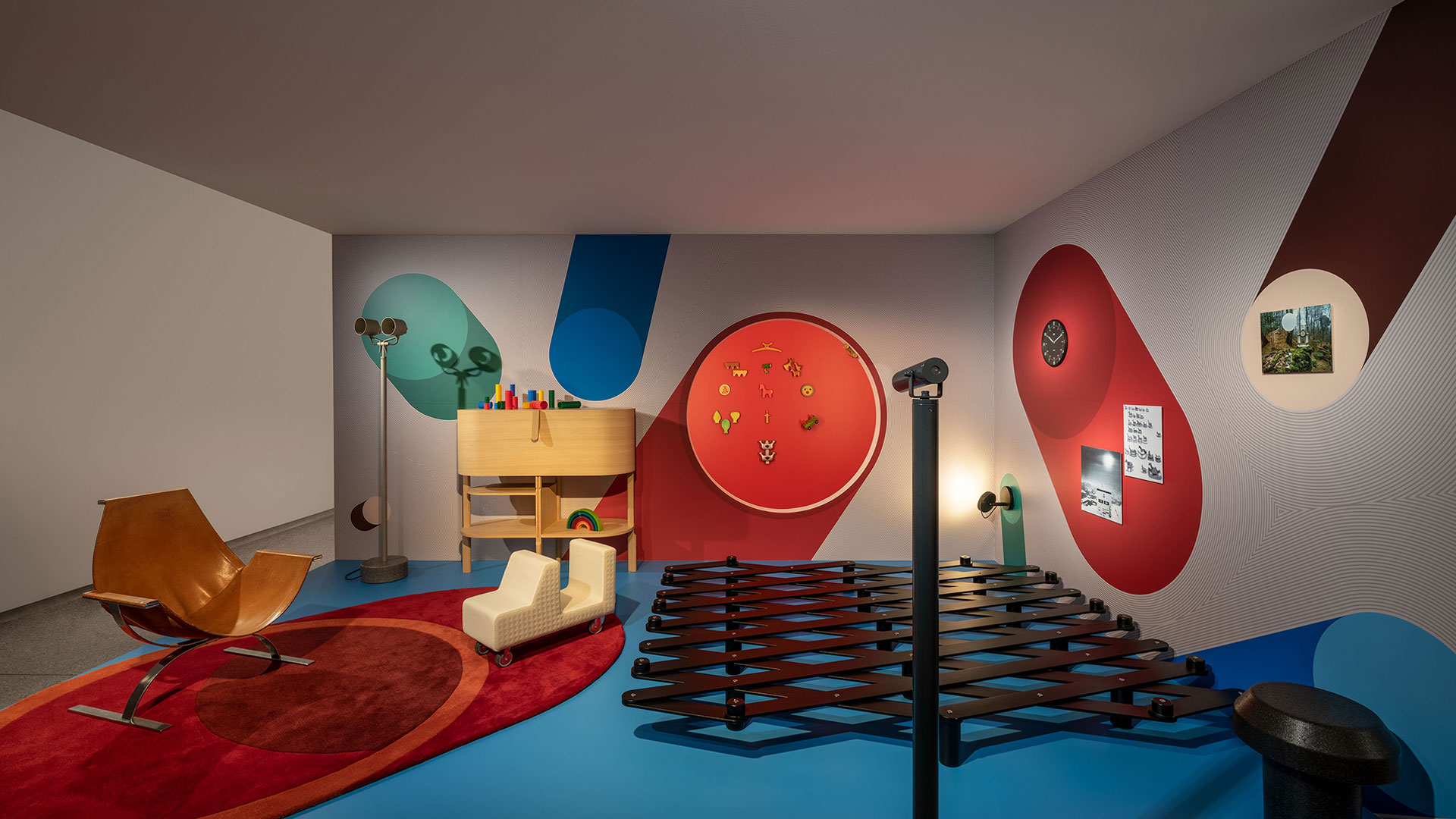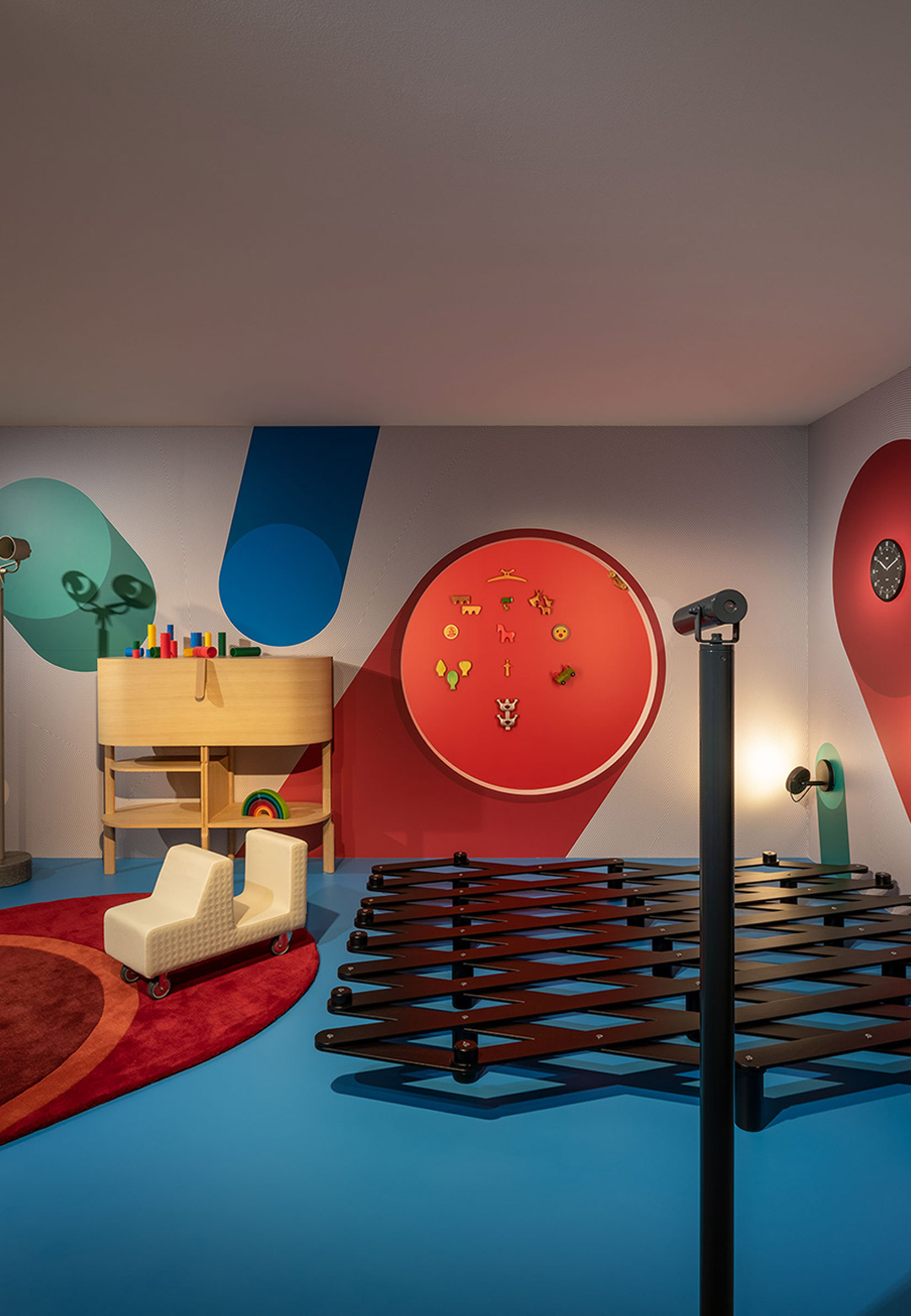How can collectable design and functional art be combined to create an immersive yet intimate experience? Can industrial objects be configured to resemble bespoke sculptural entities? In the world of art and design, objects, spaces, and environments bear the capacity of adorning multiple personas. A formal setting can be transformed into a laid-back and casual locale in a matter of minutes with the help of the appropriate lighting. Kitschy decor, too, can be juxtaposed against minimalist entities to occupy sophisticated indoor spaces. In an attempt to explore a similar narrative, the Museum of Design Zürich (Museum für Gestaltung Zürich), based in Ausstellungsstrasse, Zürich, Switzerland, hosts a permanent exhibition—unveiled last year--in its premises called 6 Rooms x 6 Positions. The idea is simple: six Swiss design studios were invited to style one room each with objects and furniture from the museum’s collection. As a result, new creative ideas were explored and novel spaces—where product design and interior decoration met—was born.
The Swiss studios involved in the creation of the six distinct spaces include Jörg Boner, Connie Hüsser, Kueng Caputo, Sebastian Marbacher, Panter&Tourron and Adrien Rovero. They picked out some of their favourite pieces from the museum’s collection of 500,000 objects and configured them within a room to reflect the ideas and concepts that guide their work. In doing so, the exhibition manages to communicate the major themes apparent in the contemporary design scene in Switzerland. The exhibition is made up of six distinctly stylised rooms, with video and verbal commentary accompanying each presentation. It also includes objects designed by each of the six designers.
Alexis Tourron and Stefano Panter of Panter&Tourron are designers who are guided by nomadism. “You tend to appreciate nomadism when you are sedentary and anchored to something that can’t move. It’s about lightness. We place objects that are relatively light, where everything is flexible and one can move objects around. In our everyday lives, things keep on changing and we must change with them,” Tourron and Panter explain. The designers credit this inspiration to the Ray and Charles Eames. Upon visiting residences designed by the iconic duo in Petaluma and Los Angeles, they observed that there was nothing heavy or stationary within those homes. The objects could be moved around easily and so could the walls. Their room at the Swiss museum resonates with this idea. Titled Station, the living space welcomes guests and travellers from across the globe to come and stay and reconfigure the space as they desire.
On the other hand, Zurich-based interior designer and product designer Jörg Boner’s green room is an attempt at subverting the commonly held myth about Swiss design. “There’s this myth that’s perpetuated about Switzerland, both from within and without the country, that everything is very precise and meticulous. I was interested in polarising this and contrasting it with a very different narrative. In my room, Sophie Taeuber, Christoph Hefti and Hannes Wettstein represent this,” the Swiss designer explains. While pieces by Taeuber and Hefti affirm the aforementioned narrative about Swiss design, Wettstein’s rug juts out, breaking the narrative completely.
The third designer, Sebastian Marbacher, whose studio lies in Sihlquai in Zurich, especially engages with wood for his creations. “I love working with wood because it is close to us humans, it is a warm material. It is easy to work with and readily available. Much easier than metal,” the designer says. His room at the museum places renowned and influential figures from the history of design around a table. Marbacher imagines their personalities and their conversations and stations furniture that mirror these verbal exchanges. On the wall, one can also find conversation bubbles reflecting imagined conversations.
Lausanne-based product designer and scenographer Adrien Rovero’s vibrant room draws attention to the objects that we use in our everyday lives. The individual pieces, placed at an appropriate distance from each other, beckon viewers to explore and contemplate. The zany yet subtle wall art that foregrounds these objects helps present them as protagonists of the show. Rovero had this to say about the inspiration behind his creative endeavours: “The designer who has most inspired me, right from the beginning, is certainly Achille Castiglioni. There is always an aspect of humour in his work but in homoeopathic doses. You can feel there’s something playful in the use of his objects, which is rather pleasing. There is always an extraordinary pragmatism concerning the production and the signs that it generates. This thematic fits right in with what I’m doing for the room in the museum.”
“I’m a hunter-gatherer. I go out looking for things, find something cool, and acquire it. Then I create my own unique images. For me, styling is about chaos, looking at it, curating it,” Zurich-based stylist Connie Hüsser explains. Her room reflects this concept well. The room, busy with objects, inspires curiosity.
Finally, Swiss studio Kueng Caputo, comprised of Sarah Kueng and Lovis Caputo, sheds light on the various entities, such as packaging materials, that are discarded and thrown away each year. “We create designs for humans. What matters to us, because basically everything is based on capitalism, is that we are completely against basing everything on performance,” the designer duo shares. Their presentation comprises the placement of secondary packaging materials on shelves, forcing the viewers to introspect the consequences of discarding masses of materials every year.
The six themes adorning each room for the exhibition help reveal the taste of contemporary designers and become a diverse platform for discussions and debates on current issues that scathe the world at large and the design industry in particular.
The ongoing exhibition '6 Rooms x 6 Positions' is on view at Museum für Gestaltung Zürich, Ausstellungsstrasse, Zürich, Switzerland.






 Sign in with email
Sign in with email










What do you think?